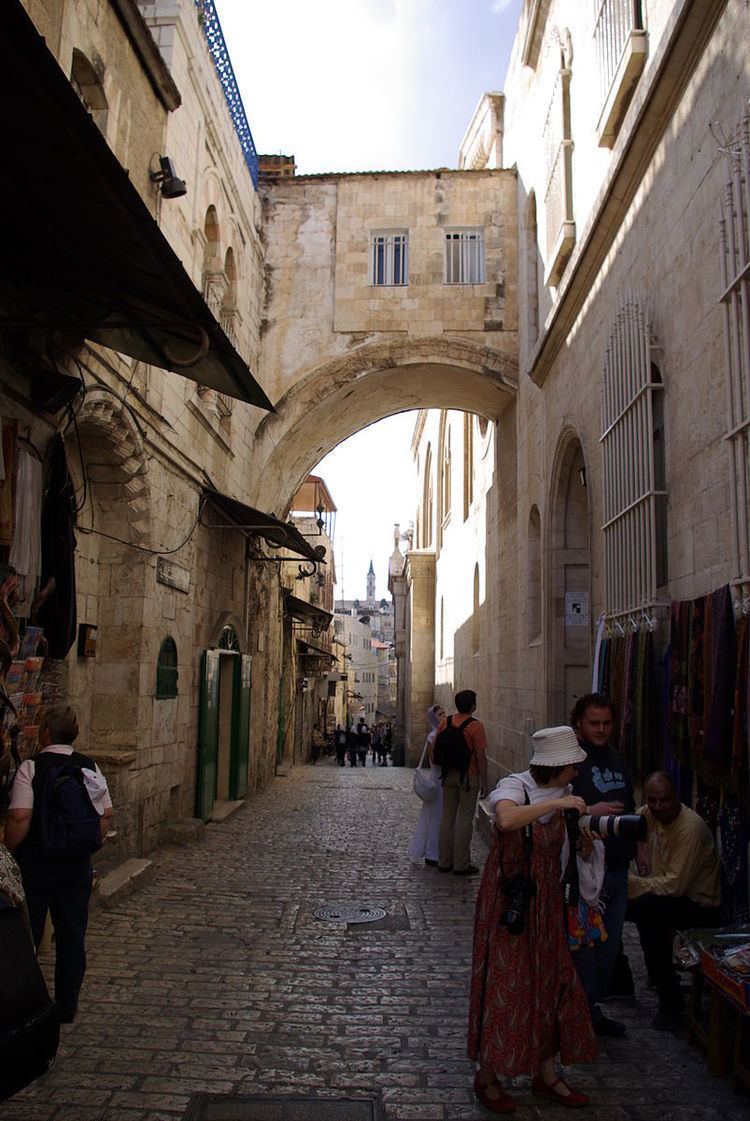 | ||
Similar Church of Ecce Homo, Church of the Flagellation, Church of the Condemnation, Church of Saint Anne - Jerusalem, Antonia Fortress | ||
The Convent of the Sisters of Zion is a convent of the Congregation of Notre-Dame de Sion, located near to the eastern end of the Via Dolorosa, in Jerusalem. The convent was built in 1857, by Marie-Alphonse Ratisbonne, but the site also contains ancient archaeological remains of significant value.
Contents
19th century Buildings
In 1857, on the land later taken by the convent lay ruins. Ratisbonne, a French Jew and former atheist who converted to Catholicism and became a Jesuit, decided to purchase the site. Between 1858 and 1862, he built a basilica (the Church of Ecce Homo), an orphanage for girls, and standard convent buildings. As the convent was quite confined in size, the nuns bought a few of the surrounding Arab homes, incorporated them into the convent; they soon opened a medical dispensary on the site. Due to the introduction of state support for orphans, by the Ottoman government and later (1948) by the Israeli government, the orphanage buildings have been used for other religious purposes since 1967. The Convent now maintains a guesthouse and library.
Roman Pavement
Immediately beneath the convent is an extensive area of Roman flagstones; as these continue, to a lesser extent, under the Church of the Condemnation and Imposition of the Cross, they have been known about for several centuries. These flagstones were once thought to be the pavement (Greek: lithostratos) which the Bible describes as the location where Pontius Pilate adjudged Jesus' trial, but archaeological investigation now indicates that it is the paving of the eastern of two 2nd century Forums, built by Hadrian as part of the construction of Aelia Capitolina.
Struthion Pool
Beneath the paving is a large cuboid cistern, which gathered the rainwater from guttering on the Forum buildings. Prior to Hadrian, this cistern had been an open-air pool, but Hadrian added arch vaulting to enable the pavement to be placed over it. The existence of the pool in the first century is attested by Josephus, who reports that it was called Struthius (literally meaning sparrow). This Struthion Pool was originally built as part of an open-air water conduit by the Hasmoneans, which has since been enclosed; the source of the water for this conduit is currently unidentified.
Ecce Homo arch
The convent also includes the Ecce Homo Church, which contains part of the Ecce Homo arch, which extends to the outside street. Although the arch was traditionally believed to be spot corresponding to the Biblical account of Pilate giving the Ecce Homo speech, it is now known to have been a triple-arched gateway built by Hadrian, as an entrance to the aforementioned Roman Forum.
